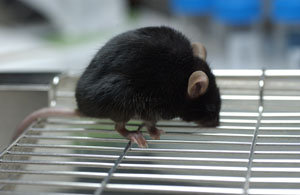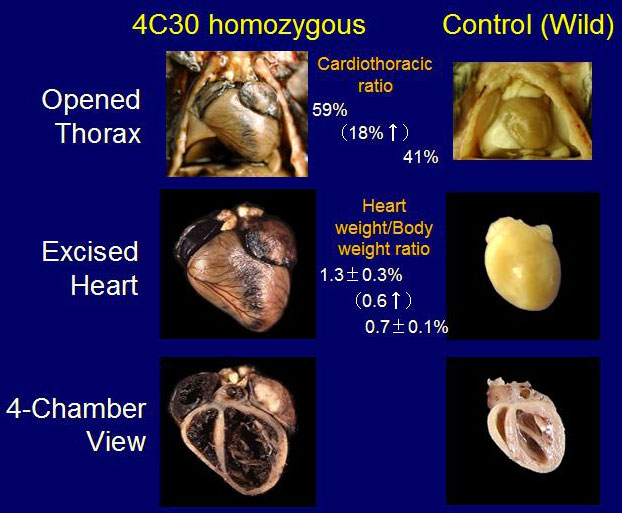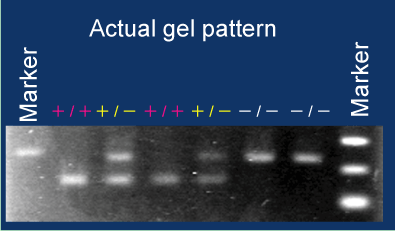HOME > mice > 4C30 mice
Strain Detail: 4C30 mice
| Strain information | |
|---|---|
| Resource No. | nbio009 |
| Strain name | 4C30 |
| Strain Nomenclature | |
| Common name/Synonyms | Dilated cardiomyopathy model mice |
| Strain types | mutant |
| Background strain | C57BL/6 |
| Institution | National Institutes of Biomedical Innovation, Health and Nutrition (NIBIOHN) (formerly, National Institute of Infectious Diseases) |
| Developer | Osamu Suzuki |
| Depositor | Osamu Suzuki |
| Conditions of distribution | It's necessary to obtain depositor's consent on use of biological resources. contact us |
| Animal Health Report | |
| Strain description |  The 4C30 strain is one of the transgenic mice harboring sialyltransferase transgenes. All mice homozygous for the transgenes died about seven months of age due to respiratory failure with enlarged hearts. The cardiac symptom suggests that the mice would be a possible cardiomyopathy model. We are currently examining the mice in our laboratory. Heart symptoms We examined hearts of homozygous 4C30 and normal control mice after fixation by perfusion with 7:3 mixtures of 10% formalin and Carnoy fluid. As shown in two top panels in the right figure (enlarged view of the hearts), the heart of the homozygous 4C30 mouse (left) is much larger than that of the age-matched control mouse (right). Cardiothoracic ratio (heart/thoracic ratio) of the 4C30 in the figure is 59%, 18% larger than the control (41%). The two middle panels show the excised hearts. Both right and left atria of the 4C30 are quite large. The heart/body weight ratio of the 4C30 was 1.3 ± 0.3%, significantly larger than that of the control mice (0.7 ± 0.1%). In the two bottom panels, four-chamber views of the hearts indicate the homozygous transgenic mice had an enlarged heart with dilated chambers and thinner walls of both atria and ventricles. Transgene structure and the insertion siteThe 4C30 strain was produced by microinjection of transgene constructs into pronuclei of C57BL/6NCrSlc zygotes. The transgene is constructed based on the pCAGGS expression vector (Niwa et al., 1991) inserted at multi-cloning sites with mouse cDNA for β-galactoside α-2,3-sialyltransferase 2 (ST3GalII or Siat5; Lee et al., 1994; Kono et al., 1997).  The sequences of the flanking region of the transgene in the 4C30 genome were determined by genomic walking techniques and located in the genome by BLAST search in Ensembl database (See genotyping of the transgenic mice for detailed methodology). The position of flanking sequences, i.e., the transgene insertion site is located on the 11th chromosome of the 4C30 genome. As shown in the results (enlarged view of the chromosomal map) of Ensembl database search, no gene was currently described at the insertion site, indicating that no disruption of endogenous gene occurred by the insertion of the transgene. |
| Reference(s) |
|
| Resource information | |||
|---|---|---|---|
| Cryopreserved sperm | In-house | Genotype | Tg/Tg |
| Medium | FERTIUP or R18S3 | ||
| From other institutions | Genotype | ||
| Medium | |||
| Cryopreserved embryo | In-house | Mating System | IVF : (Tg/Tg) female x (Tg/Tg) male |
| Genotype | Tg/Tg | ||
| Medium | EFS40 | ||
| From other institutions | Mating System | ||
| Genotype | |||
| Method | |||
| Strain status / Availability | Cryopreserved sperm | Within 1 month | |
| Cryopreserved embryo | Within 1 month | ||
| Live animals | Approx. 2 months | ||
| Gene information | |
|---|---|
| Mutation types | transgenic |
| Gene symbol | St3gal2 (Siat5, St3GalII) |
| Gene name | ST3 β-galactoside α-2,3-sialyltransferase 2 |
| Genotyping information |  We can easily differentiate homozygous transgenic, hemizygous transgenic and wild using PCR with flanking primers. For the actual genotyping for the 4C30 strain, we routinely use three primers shown below and judge genotypes of each mouse by the appearance of the combination of Tg-band (+ band; 175 bp) and wild-band (− band; 228bp). See genotyping of the transgenic mice for detailed methodology.
|
